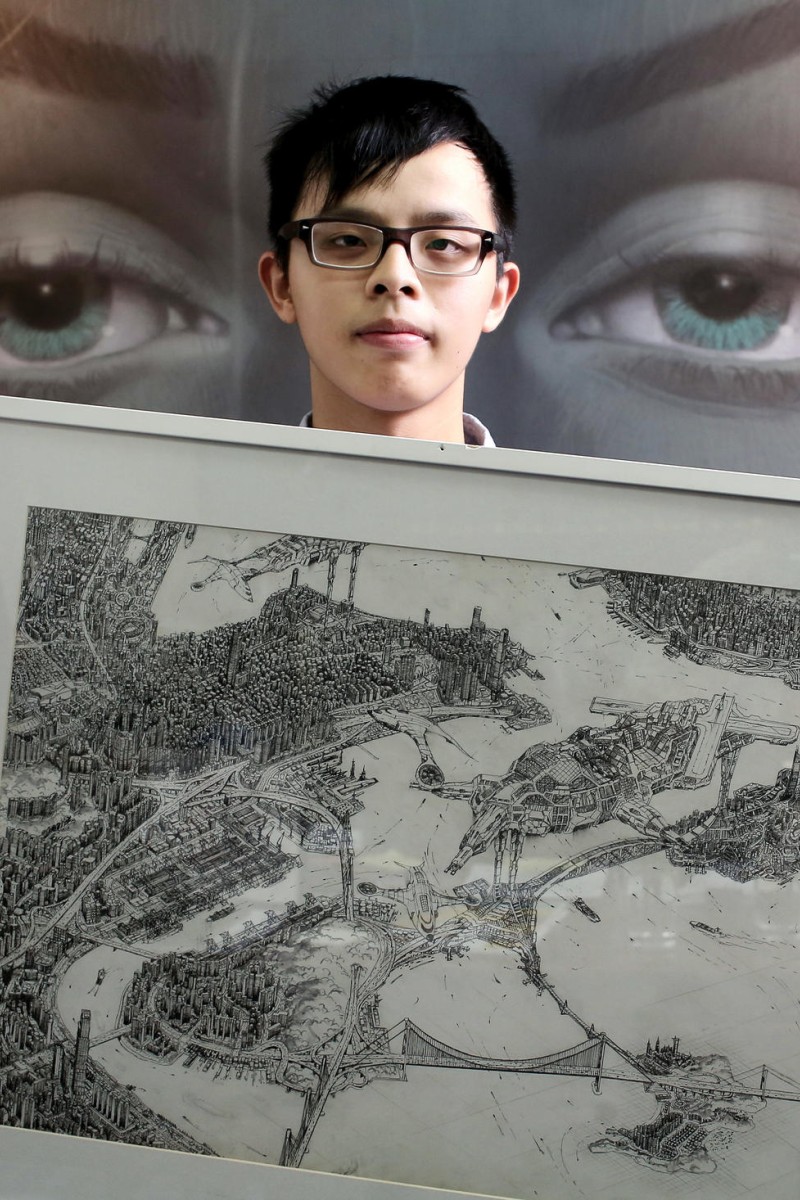 Gordon Chan's drawing is a vision of the city's future.
Gordon Chan's drawing is a vision of the city's future.If you could redesign Hong Kong, what would be the first thing you would do? Perhaps you'd widen the streets in Causeway Bay so it wasn't so crowded. Or maybe you would add a few more cross-harbour tunnels.
Gordon Chan Hau-yan, winner of the Sovereign Arts Foundation Schools Prize in March for his drawing SimCity 2013, had his own ideas.
It just so happens that SimCity is 18-year-old Gordon's favourite computer game. It was also the inspiration for his drawing . The drawing is his own vision for an alternative Hong Kong.
"It was a lot like playing the game," says the Form Six student from Jockey Club Ti-I College. "At first, you don't give things much thought, but you have to develop the city based on its current structure."
As the imaginary "dictator" of the city, Gordon had the power to totally change the way Hong Kong looked. He introduced new features, like artificial islands and spaceship docks.
"Unless something is really wrong, I wouldn't fight against it, just try and see how it works out," says Gordon. "Whenever you make a decision, you won't be able to tell whether it's the right decision until you see the final result."
SimCity 2013 took the map of Hong Kong as a starting point. It is the sort of challenge a player faces in the computer game. Gordon then focused on crowded Kowloon, where he grew up.
He didn't draft the whole city at once, instead starting at the bottom left corner where he placed Metroplaza in Kwai Chung. From there, he let the city develop wherever his pen led him.
He researched all the major roads, bridges and landmark skyscrapers. He also tried to predict future developments.
For example, the New World Centre in Tsim Sha Tsui will be rebuilt in the near future. So Gordon managed to find a concept map of the building, and based his sketch on it.
He also added artificial islands, because he read in the news that the government is planning to build some. "I thought maybe I should build them first," he said.
On the right side of the painting, Gordon "built" an airport in the sea. While this seems unbelievable, he argues that we shouldn't rule anything out in the future. Who, 50 years ago, would have predicted Hong Kong would look like it does today?
"If you are determined to do something, there's always a way," says Gordon.
Next to the airport is a spaceship dock.
"Hong Kong is already an international hub; in the future it could become an interstellar hub. And who knows? By then Hongkongers may have colonised the moon."
When Gordon was very young, he enjoyed nothing more than grabbing a pen and drawing. His parents made sure he always had some paper nearby, so he wouldn't draw on the walls.
Gordon, who has been drawing since primary school, likes to sketch with a pencil or ballpoint pen. He's developed a unique style, which is very different to what he's learned in class.
With Simcity 2013 When he was awarded the Sovereign Arts Foundation Schools Prize, it wasn't just a personal victory. His success has also earned his school a reward. "We provide prize money to both the students and their schools," says Joey Lau, prize manager of the foundation. "[We want] schools to devote the money to their visual arts departments, and create more opportunities for the students. The visual arts are not valued enough in our city."
